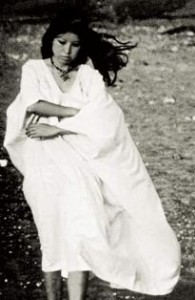 Bari came to dinner on his motorbike. Helmet, jacket, and his signature black turban that he wrapped around his neck. From an already breaking paper bag he pulled out one item after another: tea pot, jars of spices, a tin can of sugar, mint, coriander, tomatoes, eggs and Moroccan bread (khubs).
Bari came to dinner on his motorbike. Helmet, jacket, and his signature black turban that he wrapped around his neck. From an already breaking paper bag he pulled out one item after another: tea pot, jars of spices, a tin can of sugar, mint, coriander, tomatoes, eggs and Moroccan bread (khubs).
“I’m making mint tea and omelet.” He announced.
“My father thinks he is diabetic,” I told Bari. “I don’t think he’ll go for the tea. As for the bread, it’s too hard on his teeth. I think the only thing he can eat is the omelet, but don’t make it too spicy.”
Celebrating Thanksgiving with a ninety-year-old man, everything had to be soft.
But when Father saw the bright green mint stuffed in a cup he became curious. And the bread, which I toasted in the oven, came out hot and crispy on the outside. He smacked his lips as he tasted the mint tea. “Sugar!” He smiled, and drank heartily.
The omelet reminded me of the Sahara (where Bari came from) with sand (cumin and ras el-hanout) and stones (green peas and tomatoes) and the large sun (the eggs, scrambled and cooked with lots of liquid).
Toward the end of the meal, Father figured out how to eat the khubs too, dipping the bread into the mint tea to soften it. Now he was satisfied.
“Bari, you are a good cook.”
Bari smiled. He loved my father.


